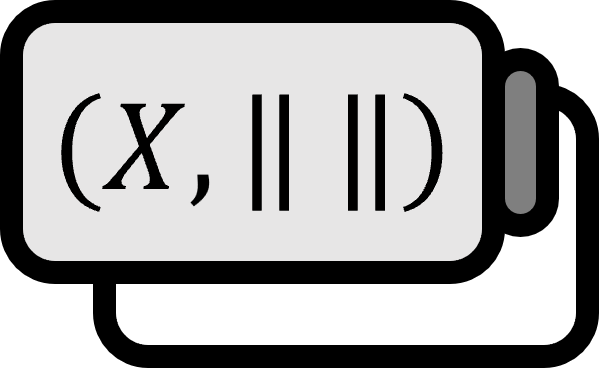Integration Operator
Definition1
For the space of continuous functions $C[0 ,1]$, the operator $T : C[0, 1] \to C[0, 1]$ defined as follows is called the integral operator.
$$ y = Tx \qquad \text{where} \qquad y(s) = \int_{0}^{1} K(s, t) x(t) dt $$
Herein, $K$ is called the kernel of $T$. (It is assumed that the kernel $K$ is continuous on $[0, 1] \times [0, 1]$.)
Explanation
The integral operator is also referred to as integral transformation. Typically, the domain and the codomain of $T$ are considered vector spaces for transformations, and normed spaces for operators.
Theorem
The integral operator is linear and bounded.
Proof
Linearity: This is trivial by definition.
Bounded:
Norm of the space of continuous functions
The norm of the space of continuous functions $C[0, 1]$ is defined as follows.
$$ \left\| x \right\| := \max\limits_{t \in [0, 1]} \left| x(t) \right|,\qquad x \in C[0, 1] $$
Firstly, $\left| x(t) \right| \le \max\limits_{t \in [0, 1]} = \left\| x \right\|$ holds. In addition, since $K$ is continuous, it is bounded on a closed interval.
$$ \left| K(s, t) \right| \le K_{0}\quad \forall (s, t) \in [0, 1] $$
Therefore, the following is obtained, and $T$ is bounded.
$$ \begin{align*} \left\| Tx \right\| &= \max\limits_{t \in [0, 1]} \left| \int\limits_{0}^{1} K(s, t) x(t) dt \right| \\ &\le \max\limits_{t \in [0, 1]} \int\limits_{0}^{1} \left| K(s, t) \right| \left| x(t) \right| dt \\ &\le K_{0} \left\| x \right\| \end{align*} $$
■
Erwin Kreyszig, Introductory Functional Analysis with Applications (1978), p94 ↩︎
